#Siskin River
Explore tagged Tumblr posts
Text










03/01/2024-Winnall Moors and a quick look at Lakeside this morning and bits at home
Photos taken in this set are of; Moorhen and Carrion Crow feeding at Lakeside, one of two gorgeous mushrooms with moss nearby at Winnall Moors, beautiful views at the peaceful Winnall Moors, pretty and enticing Siskins at Winnall Moors which were a joy to watch, Mallards at Winnall Moors and sky at home towards sunset.
I was very pleased to see my first Little Grebe of the year on the River Itchen at Winnall Moors, a lovely bird to see diving and on the surface a few times. Other standout species seen at Winnall Moors were Goldcrest, charming views of Chiffchaff again, Chaffinch, Grey Heron seen nicely again flying over, a key bird so far this year Grey Wagtail, Mute Swan, great views of a Song Thrush with it heard well too, Long-tailed Tit, Great Tit, Blue Tit, rose hip and ivy with articulate Cetti's Warbler heard. Burdock seed heads, Coot and Mallard were good to see at Lakeside with Song Thrush, Blue Tit and Great Tit heard well.
#winnall moors#winchester#siskin#siskins#birdwatching#birds#river itchen#lakeside country park#chaffinch#chiffchaff#outdoors#walking#hampshire#wildlife#grey heron#uk#world#nature#happy#earth#2024#january#song thrush#bird calls#europe#england
3 notes
·
View notes
Text
Birds of Thargelion
After this I just have Maglor’s Gap and that will complete my series on birds in the Fëanorian realms pre Amon Ereb!
Flora, fauna, geography and environment of Arda Masterlist
Thargelion was the realm of Caranthir, located in the north east of Beleriand just north of Ossiriand and bordered by the Ered Luin, the eastern stretch of mountains that divided Beleriand from the rest of Middle Earth
As always this is not a definitive list! Please feel free to ask more or give me a more specific category!
Around Lake Helevorn and the rivers: Red-breasted merganser, mute swan, white tailed dipper, whooper swan, smew, little grebe, red throated loon, common crane, mallard, common white eye, northern shovler, green winged teal, corn crake, spotted crake, black winged stilt
Mountains: bearded vulture, water pipit, golden eagle, kestrel, peregrine falcon, Rock ptarmigan, common siskin, alpine accentor, northern wheatear, ring ouzel, white tailed eagle, chough, spotted nutcracker, Citril finch, griffon vulture, common redstart, common raven, wallcreeper, common jay, boreal owl, white winged snowfinch, crag martin, common redstart, black redstart
Foothills and forests: black grouse, wood grouse, goshawk, grey white fronted goose, hazel grouse, little bunting, meadow pipit, tree sparrow, hedge warbler, Bohemian waxwing, common kestrel, long eared owl, little owl, marsh tit, coal tit, mourning dove, rock pigeon, woodchat strike
World building notes
-Like most of the Noldor in Eastern Beleriand, many of Caranthir’s scouts keep birds of prey. In Thargelion these are primarily peregrine falcons and kestrels. Hunting with birds was less common however.
--There are populations of Green Elves who live in Thargelion, primarily in the mountains and near the border of Ossiriand. Though they also do not use birds for hunting, certain species are kept as companions or messengers.
-Chicken breeding as an art and science developed during the Watchful Peace. Chickens in Thargelion are appraised for long plumage and colorful feathers. Their eggs are eaten but they are not often used for meat.
-Chickens, peacocks and quails were kept by the Noldor of Thargelion, techniques of raising and breeding them were learned from Sindar and Silvan cultures of Eastern Beleriand. Indeed the Noldor of Thargelion were one of the only Noldor populations to keep quails.
-Bearded vultures appear on the crests of some of Caranthir’s lords and were even kept by a few of them
-Feathers of various mountain birds especially eagles and ouzel appear in wood carvings as an architectural motif during the Watchful Peace in Thargelion
-Out of all the Fëanorian realms, water birds appear most often in art and other cultural references in Thargelion as Lake Helevorn and its wildlife are a central facet of life there especially in times of peace. Wading birds like crakes, cranes and stilts are especially Valued.
38 notes
·
View notes
Text
Thanks for the tag @droids-in-disguise I miss doing these!!
Last songs: let's see at the gym I was just listening to my favorite Finntroll album, Nifelvind. Also just in general the past month I've been listening to the Arcane soundtrack, esp The Line, Ashes and Blood, Spin the Wheel...yknow, things that make me cry
Favorite color: midnight blue, if that's what you call it. that gloaming turquoise-blue when it's not quite full night yet.
Last books: I haven't had time to read many new books but in the last few months I read 'The Triumph of Seeds' by Thor Hanson (science nonfiction), and reread The Vampire Lestat by Anne Rice (fiction)
Last movie: jfc what was the last film I watched?? oh, I guess it was when I rewatched Nope after getting it on bluray for Christmas.
Last TV show: Arcane. hence the jayvik takeover
Sweet/savory/spicy: i have a sweet tooth like nobody's business. anything but spicy really my spice tolerance is so low it's in the ground
A beautiful relationship in my life right now: ...... :/ idk really. my mom, I guess. She's the person I'm closest to in my life, we're best friends. but I don't really have much else.
Last thing I looked up: searching North American species of the crabronid wasp genus Oxybelus to try and ID this tough little fucker I photographed last summer and it still has me stumped. They gotta work on getting specimen photos of all species so I can compare scutellum and axillae maculations!!
Looking forward to: next week I'm seeing Chris Fleming with my friends in Boston, I have tickets with another friend to see Korn & System of a Down perform together in NJ this August which will be insaneeee, uhhh.... I'm looking forward to continuing to write this (turning into a pretty long) jayvik fic that I've been working on the past month, as always I am looking forward to the end of winter when the bugs will start coming out again (as an entomologist, this is what I wait for!) and the chance to find more rare bees this year. Hopefully more travel - my friend and I are planning a trip in the near-ish future to New Zealand, and if I'm accepted into a field course I applied to I'll get to catch bees in Arizona for 10 days.
Current obsessions: jayvik. jayvik? jayvik. it's taken over my brain 24/7 to the point I've barely gotten any work done the past like, month and a half lmao. Also, I start the year off competing hard for the #1 spot in my county for birding (birding can be competitive if you let it....you can rank by number of species seen in a county, state, country, even specific location). Year rankings reset Jan 1, so everyone's off to the races. Last year I held the #1 spot for a month (I eventually lose out to the retired folks who can just. go hard), I've been stuck at #2 for a couple weeks now because it's a colder winter and some of my half-hardies I can usually get (hermit thrush, field sparrow, turkey vulture) don't seem to be around and it's not a winter finch irruption year so the siskins, redpolls, purple finches, and red-breasted nuthatches are all but absent. Haven't been able to track down a bald eagle which is so silly because I live on a major river and they're always around. Never have I been so happy to find a ring-billed gull to make species #46 for the year.
I'll tag some cool people on here: @hawkpartys @4amarcanethoughts @hexcoreviktor
2 notes
·
View notes
Video
Robin on the East Lake Kent Reserve.. by Adam Swaine Via Flickr: Sevenoaks Gravel Pits is a 73.7-hectare (182-acre) biological Site of Special Scientific Interest on the northern outskirts of Sevenoaks in Kent.[1][2] It is managed by Kent Wildlife Trust as the Sevenoaks Wildlife Reserve..The site was converted from gravel-pit to nature reserve by the Harrison family - particularly Jeffery Harrison, after whom the visitor centre is named. As such, the site is almost totally man-made - nearly all trees on the site were manually planted,[4] and the lakes and ponds were created by excavating and flooding former gravel workings with water from the River Darent.[5] As such, the site represented the first such conversion of a gravel-pit anywhere in the United Kingdom.[4] Large areas of gravel and sand were replaced with woodland, supporting birds such as woodpeckers, warblers and tits, as well as other migratory birds. These include siskins - a bird that comes in the winter months to feed on alder seeds.[4] Areas of the reserve have been left to mature and reach old age, with plenty of dead wood habitat for fungi and insects. In contrast, other sections see the trees are coppiced to create open areas and denser woodland with its own community of plants and animals. The reserve further includes five lakes and a mixed habitat of ponds, seasonally flooded pools,
#walks#waterside#water#lakes#robin#robin red breast#Robin (Erithacus rubecula)#adult robin (Erithacus rubecula)#(Old World flycatchers)#passerine bird#passerines#perching#england#english#english birds#british birds#british#britain#nature lovers#nature#natures finest#nature watcher#nature reserve#RSPB#wildlife#wild#scenic#Birds#Kent#South East
2 notes
·
View notes
Video
vimeo
The Sentence of Michael Thompson (Interactive) from Kyle Thrash on Vimeo.
The Sentence of Michael Thompson is a winner of the 2022 Best of the Year award. To explore the full list of winners, check out vimeo.com/bestoftheyear
Sentenced to 42 to 60 years in prison due to charges stemming from a low-level 1994 cannabis sale, Michael Thompson remains in prison even as the state where he was arrested legalizes marijuana use.
Please look into the work over at LastPrisonerProject.org on how to get involved. All the love and gratitude to Michael, Rashawnda, and Kim and all the activists, researchers, and crew that helped in making this meaningful project.
Official Selections + Accolades: 44th Emmy Awards - 'Best Short Documentary' nomination 95th Academy Awards Qualified Vimeo Best of The Year Short of the Week - Jury Award Winner "Short of the Year" World Premiere • • • SXSW 2022 - Audience Award Winner + Jury Special Mention Official Selection • • • Palm Springs Shortfest - Jury & Audience Award Winner Official Selection • • • Hamptons International - Special Mention + Audience Award Winner Official Selection • • • River Run - Jury Award Winner Official Selection • • • Chicago Film Critics - Audience Award Winner Official Selection • • • Traverse City Official Selection • • • Santa Barbra Official Selection • • • Doc NYC Official Selection • • • Indy Official Selection • • • Rhode Island Official Selection • • • Calgary Official Selection • • • Nashvile Official Selection • • • Hollyshorts Official Selection • • • Atlanta Official Selection • • • Athens Official Selection • • • Rooftop Official Selection • • • Freep Directors Library Feature Hollywood Reporter Best Shorts of the Year
Director: Kyle Thrash + Haley Elizabeth Anderson Executive Producer: Bryn Mooser, Just Lacob, Kathryn Everett, Lydia Kives Executive Producer: Rashida Jones, Amanda Spain Executive Producer: William Crouse Production: Synonymous Pictures With Support from: Last Prisoner Project, MSNBC Films, XTR, Documentary+ Producer: Kyle Thrash, W. Ian Ross Cinematographer: Logan Triplett Editor: Matt Schaff Composer: Malcolm Parson Musicians: Jon Key, Dwayne Dugger II, Malcolm Parson Post sound: Calvin Pia Color: Joseph Bicknell Color Producer: Kristopher Young Titles: Eduardo Palma Production Sound Mixer: Nik Dranksoaki, Mark Haygen Assistant Camera: Kameron Donald, Hannah Noel B Camera: Noah Elliot Morrison G+E Specialty: Gavin Smith Production Manager: Jake Sharpless, Kathryna Postema Production Assistant: Andrew Diolio, Jose Marrero, Andre Rowlett, Arielle Mock Production Consultant: Robert Kandle Music Supervisor: Joe O'Riordan Archivist: Dorian Stern Researchers: Mira Edmonds, Emma Siskin
0 notes
Text
Birdwatching in the UK - Discover Rare Birds with the RSPB
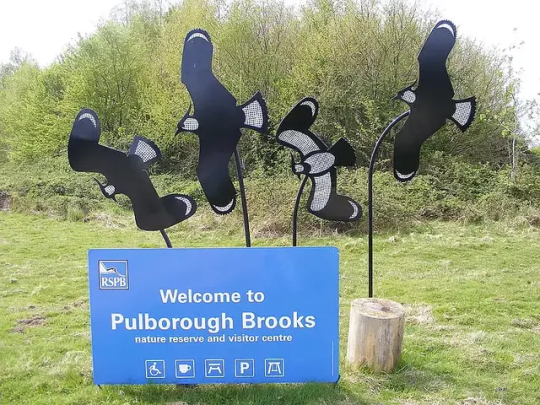
The Growing Popularity of Birdwatching in the UK
Birdwatching has become a popular activity for many people in the UK, and it's no surprise why. With its abundance of natural habitats and diverse bird species, the country offers an ideal environment to enjoy this pastime. The Royal Society for the Protection of Birds (RSPB) is one organization that has been instrumental in promoting birdwatching across the UK.
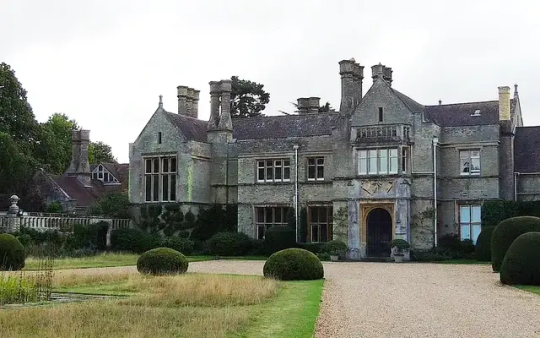
The Lodge, Sandy, Bedfordshire. Headquaters of the RSPB. Photo by Orangeaurochs. Flickr.
The RSPB and its Mission
The Royal Society for the Protection of Birds is a UK-based charitable organization that was founded in 1889. Its primary mission is to promote and protect the welfare of wild birds and their habitats. It has grown into one of the largest wildlife conservation charities in Europe, with over 1.2 million members and supporters. Milestones in RSPB's History One of the key milestones in the history of RSPB was its successful campaign to ban the use of DDT, a toxic pesticide that led to a decline in bird populations during the mid-20th century. The RSPB's efforts prompted governments around the world to take action against DDT and other harmful chemicals, leading to significant improvements in bird populations across many regions.

Starling Murmuration - RSPB Minsmere. Photo by Airwolfhound. Flickr.
Top Birdwatching Locations in the UK
Are you an avid birdwatcher? Then you're in luck! The RSPB offers a multitude of stunning birdwatching locations throughout the UK. Here are some of the best: 1. Minsmere: Located on the Suffolk coast, this reserve is home to over 100 breeding species and a variety of habitats such as reedbeds, woodland, and heathland. 2. Bempton Cliffs: Situated on the Yorkshire coast, this reserve boasts breath taking views of thousands of seabirds including puffins, gannets and kittiwakes. 3. Loch Garten: In Scotland's Cairngorms National Park lies this tranquil location known for its impressive highland scenery and resident ospreys which can be seen fishing in summer months. 4. Anglesey, Wales: There are several RSPB sites but the stand out one is the South Stack Cliffs Nature Reserve: boasting a home to over 4,000 species, including guillemots, puffins, choughs, and razorbills. 5. The Cairngorms, Scotland: Explore the Cairngorms and discover a range of rare and majestic wildlife including birds of prey. Keep an eye out for elusive creatures like the ptarmigan, siskin, and grey-footed woodpecker. And if you're lucky, you might even catch a glimpse of the UK's largest grouse species, the capercaillie.
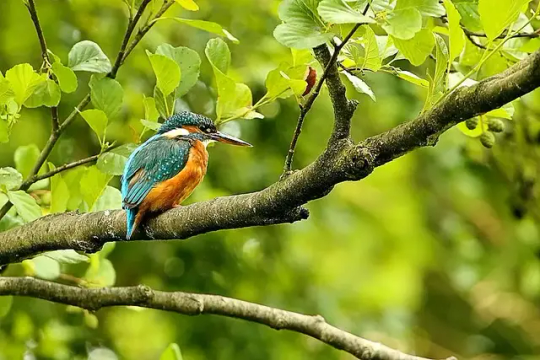
Kingfisher - RSPB Fowlmere. Photo by Airwolfhound. Flickr.
Bird species to look out for at RSPB sites
The Royal Society for the Protection of Birds has identified several bird species that visitors to their sites in the UK should keep an eye out for. These birds are not only beautiful to look at but also play a vital role in maintaining the delicate balance of our ecosystems. One such bird is the kingfisher, which can be found near water sources such as rivers and lakes. With its distinctive blue and orange plumage, it is easily recognisable and a joy to watch as it dives into the water to catch fish. Another bird species worth keeping an eye out for is the puffin, which can be spotted at RSPB Bempton Cliffs in Yorkshire during breeding season. Their strikingly colourful beaks make them instantly recognisable and they are a favourite among birdwatchers.

Entrance Lodge, RSPB reserve, Sandy. Photo by Martyn Johnson. Wikimedia.
Getting Involved with the RSPB
The Royal Society for the Protection of Birds is a UK-based charity that works to protect birds and their habitats. If you're interested in getting involved with this important conservation work, there are several ways to do so. One option is to become a member of the RSPB. Membership Benefits Membership benefits include receiving a quarterly magazine, free entry to over 170 nature reserves across the UK, and discounts on bird food and accessories. The membership also includes a welcome pack and a free gift for each new adult member. Events and Volunteering Another way to get involved with the RSPB is by attending one of their many events. The organization hosts talks, walks, and other activities that allow members of the public to learn more about birds and conservation efforts in general. Additionally, volunteering with the RSPB can be an incredibly rewarding experience for those who want to make a hands-on difference in bird protection efforts.

A colony of puffins. Photo by Joxean Koret. Flickr.
Benefits of Birdwatching for Mental and Physical Health
Birdwatching has always been a popular hobby in the UK, and for good reason. Not only is it a great way to enjoy the outdoors, but it also comes with numerous mental and physical health benefits. The Royal Society for the Protection of Birds reports that birdwatching can help reduce stress levels, improve our mood and even boost our immune system. Studies have shown that spending time outdoors surrounded by nature can have a significant impact on our mental health and birdwatching is an excellent way to incorporate this into your life. It allows us to disconnect from the stresses of daily life and be present in the moment, focusing on the beauty of these fascinating creatures. Watching birds can give us a sense of calmness and serenity, which promotes relaxation and reduces anxiety levels. In addition to its positive effects on our mental wellbeing, birdwatching encourages people to walk outdoors and this provides numerous physical benefits.

red-breasted nuthatch. Photo by Matt MacGillivray. Flickr.
Embracing Birdwatching with the RSPB
In conclusion, birdwatching has become an increasingly popular hobby in the UK and offers a great way to connect with nature. The Royal Society for the Protection of Birds is one of the leading organizations in the UK dedicated to conserving birds and their habitats. By joining this organization as a member, you not only support their conservation efforts but also gain access to expert advice on birdwatching and to their sites. Birdwatching can be enjoyed from anywhere, whether it's from your own backyard or out in nature reserves. With over 600 species of birds found in the UK, there's always something new to discover. Observing these fascinating creatures can help us appreciate the diversity of life around us and develop a deeper understanding of our environment. So why not give birdwatching a try? Whether you're just starting out or have years of experience, RSPB provides resources and guidance for all levels. Sources: THX News, Wonderlust & RSPB. Read the full article
#Birdconservationefforts#Birdwatchingevents#BirdwatchingintheUK#GettinginvolvedwithRSPB#JoinRSPBmembership#Mentalhealthbenefits#Physicalhealthadvantages#RSPBorganization#Topbirdwatchinglocations#UKbirdspecies
0 notes
Text
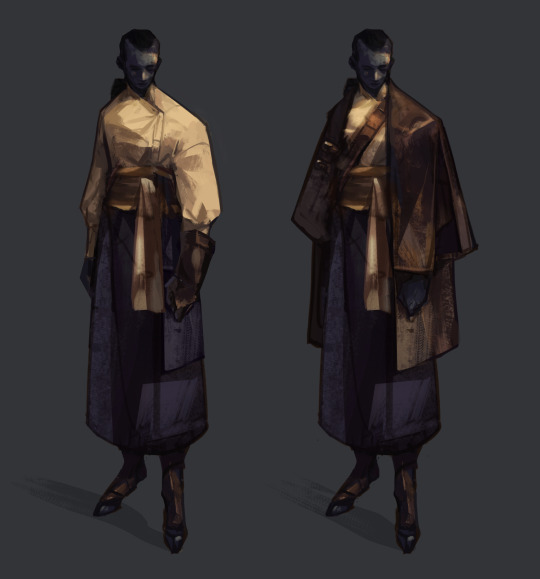
austringer
529 notes
·
View notes
Text
TULLARA tells it like it is.
TULLARA is one of Australia’s most exciting up-and-coming folk singer/songwriters. At 24, she is nearly a decade into a career journey that has garnered her acclaim across the folk festival circuit, taken her overseas to Ireland and Europe, and produced the EP Better Hold On.
Rose Callaghan - her drummer of the last 18 months - joins her on tour, as they talk about the artistry, business, and mental health of being a young working performer.

ROSE ~ You’re an incredible guitarist, how did you come to learn the instrument and how has it shaped your artistry?
TULLARA ~ I started learning guitar when I was 13. My mother is a firm believer in musical influence. [There are] five kids in my family - I’m the youngest - and she made us all learn piano when we were younger. I went through year 7 without learning any [new] instrument, and she was like “alright, come on, you gotta pick something now ‘cause you need to be learning”. I was quite lucky with my [first guitar] teacher - he didn’t know too much about theory, but he played everything by ear, and so I’d take him a CD with my favourite songs on it and he’d listen to it and quickly learn it in a couple of minutes and teach it to me.
- Pretty unorthodox!
Right from the start [I] was learning how to use my ear, because I’d watch him do it and try the same thing at home.
•
Did you voice develop before or after?
I always mucked around. I didn’t really sing so much until I was maybe… 13? The singing sort of went hand in hand [with playing guitar]. I was 14 when I did my first music eisteddfod [a Welsh term for competitive events in the arts], and I won! [Mum asked my] sister’s old singing teacher “what do you think of her voice?” [and] she said “oh, it does need a bit of work, but god, can she play that guitar!” I was playing constantly. Mum talks about me following her around the farm, being like “listen to this/what do you think of this?”. [My] singing eventually got better as well… and then I started songwriting.

Was there a particular music scene that nurtured your early career, and how did you find your way into it?
I went to my first folk festival when I was 16, just as a punter. Then I went to Woodford Folk Festival, and that was life-changing. That’s when I was like, “wow, music is what I want to do”. I met John Butler at Woodford, who was [one of] my idols at the time. He signed my guitar! A month later I played at Tamworth Music Festival, and mum entered me in CCMA National Talent Competition… and I won overall. I got $1500, and then I bought my first banjo. That was a huge turning point as well… I guess the folk music scene was the first real eye opener…
- You always wanted to play banjo?
I can’t really remember what originally inspired me… I think it was the Beverly Hillbillies TV show!
•
So you’re a self managed/self promoting artist: had you been managing yourself before being selected to participate in The Seed in 2016? Did that program impact the way you manage yourself?
The Seed Fund aims to help Australian artists from any background, creating art and music across any genre, to establish themselves as self-sustained, professional artists.
Since I was 18, I was self-managing with my sister. We just naturally started doing that, [because] we had a band together called Siskin River. We quickly realised all we have to do is [contact] these venues and try and get a gig. From 2011-2015, I was co-managing with my sister. When I started my solo project, that’s when I had to 100% manage everything I was doing. I started doing that for just under a year before I applied for The Seed’. [It]’s really good in the way that it was very inspiring, and I got to meet a lot of other self-managed [artists]. It made me see things more globally.

Tullara and her sister Shalane as the duo Siskin River ~
youtube
”My songwriting’s moved from folk music to more pop/roots/rock sorta vibes, and that’s just me maturing in general”
Do you think it’s important to have an aesthetic in relation to musical presentation and self promotion?
I think it’s important to have consistency in your image and how you present yourself. It’s interesting how some people will try and change your appearance because they don’t think it’s as cool as it could be… I’ve had some people suggest some things to me [like] “you should cut your dreadlocks off!”… because it’s a bit hippy and not mainstream enough. I always just try to be myself, but I’m making myself more presentable and neater [for the] mainstream, because I think that’s where my music has gone. My songwriting’s moved from folk music to more pop/roots/rock sorta vibes, and that’s just me maturing in general. Over time I’ve just tightened up my act and image a bit, because first impressions are 100% the most important thing in the music industry.
•
What do you find to be the main adversities that come with being a self-managed musician?
When you don’t get the gigs that you’re trying to get. I can spend hours emailing venues or applying for festivals and I’ll get less than 10% of what I try for. It’s very time consuming, and there’s a lot of computer work, [so] instead of being creative, writing, and practicing, I’m spending the majority of my time on the computer. That’s something I struggled with last year. There’s [also] no minimum wage… it’s all so varied, especially with festivals and even pub shows. I’m learning now it’s almost what you ask for. it’s a bit of “smoke and mirrors”, but you never know [with that approach].
- The main positives?
I just do whatever I want. I think about where I want to go/play. Having the control, having the freedom. And money-wise, 20% of what I earn isn’t going to a manager either.
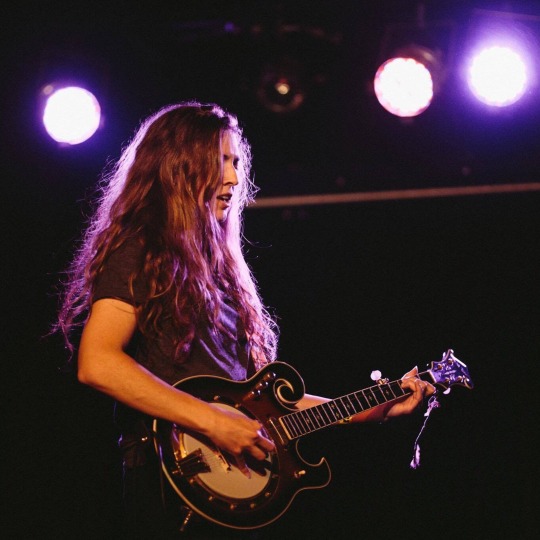
Now, how do you feel the music industry has treated you, not only as a self-managed musician, but as a self managed female musician?
Mostly positively… mostly. I’ve definitely had a few ups and downs with being female. I’ve been ripped off - only a couple of times - but they’ve taken advantage of the fact I’m a solo female. But that’s not as strong as, say, a band of four dudes that are like “give me my fucking money!” - and I’ve said that before!. You need to be stronger sometimes to get what you’re owed. But mostly I’ve had a pretty good experience.
Have you heard people say similar things to other female artists?
Other female artists have had more of a rough time than I have.
- but you’ve noticed the difference in attitudes towards women.
Absolutely, 100%. I’ll go into a music store and ask [a storeman] for gauge 13 strings, and he’ll be like “that’s a bit heavy, you’re probably after 10’s or 11’s” [exasperated sigh]. Have you seen me play?! Can I have the 13’s please? So music stores have always been like that. Every time I enter one, someone goes “hi sweetheart, what are you after?”, and they lead you to the ukuleles [laughs].
Tullara continues with a plethora of cringe-inducing music store anecdotes, in keeping with the theme of being infantilised by men simply for being a woman. It’s a peculiar insight into this section of the industry culture.
•
This is a big question: How has the musician lifestyle of touring, writing, and recording effected your well being and mental health?
There’s ten seconds of nervous laughter, before she sighs into her response.
Ah geez, it’s not great. I’ definitely not the specimen of health. It’s interesting… with touring - pub shows, for instance - you’re often given lots of free alcohol, and that seems to go hand-in-hand with the music industry. Sometimes, they’ll say “we’ll give you [some small] money, but we’ll give you free drinks all night [to make up for said small amount]”. It’s often an incentive to make it worth it. So that has taken a toll on my health since 2011. It’s part of the culture. I don’t have a good diet, but that’s definitely what I want to change.
She mentions there’s been a push for venues to offer free food - as opposed to free alcohol - in an effort to encourage sobriety at festivals.
-It’s not only physically, but mentally draining.
[Mmm]. The travel is definitely hard work, and I’ve done some crazy shit over the last year with it. Things like 10 flights within 7 days… and driving for hours on my own…. it’s a lot nicer when you’re touring with people, so I try to do that now whenever I can, because I want to have company, and it makes touring a lot easier. You need a lot more discipline when you’re on your own.
What are some things you do to make sure you look after your mental health while also trying to keep up with the demanding work load of self management? How do you not ‘burn out’? Any tips?
Try to plan a tour in a way that isn’t going to burn you out. I still find myself making that mistake… I’ll make sure I go to bed at a reasonable hour.
- So give yourself time, sleep!
Sleep is an important one - because if you’re not sleeping well, then by a week into the tour you’re gonna be shattered, and it will take a toll on your performance… your voice is one of the first things to go when you’re tired. Giving yourself a couple of days off [during] long tours is very important. It can get a little bit stressful… and even for your band members. I remember a drummer I had once who was like “it would have been nicer to have a couple of days off to explore this town I’ve never been to”. You gotta have fun! If you’re not having fun, what’s the point in doing it? Try and constantly learn something new… challenge yourself, and get better. That’s something I try and do, just learn new songs every now and then.
•
What is the highlight performance of your career so far?
Aww, I like that [question]! Probably opening for The Waifs in Grafton at the Saraton Theatre. It was in my home town, in this heritage-listed theatre that seats nearly 1,000 people, and it’s just incredible opening for my teenaged-absolute-most-favourite band. And they got me up on stage with them for their last song!
Do you have any tips for how to cope with performance nerves/ anxiety?
I don’t get nervous so much anymore, if anything I crave nerves now! Make sure you’re prepared. Embrace the nerves!
What are your 3 favourite artists right now?
You know my number 1! [laughs] Tay-Tay, I do absolutely love Taylor Swift. Number 2? Wallis Bird. 3… I feel like Electric Fields.
What’s next for you? You mentioned a big album!
I’ll be releasing my debut album later this year! Very exciting. It’s been a very long process. I’m going to Canada to finish it, [and I’ve] never been to Canada!
Any upcoming gigs?
Lots of gigs around NSW and Queensland, and the Woodford Planting Festival. Apparently you get to take home a tree! ☆
Tullara’s music can be found on all good digital streaming platforms, and through her official website.
#music#folk#singer songwriter#australia#alternative#Tullara#Tullara Connors#Siskin River#Better Hold On#EP#Aussie#Woodford Folk Festival#guitar#guitarist#acoustic#folk rock#new music#2019#interview#artist#music industry#John Butler Trio#The Waifs
1 note
·
View note
Text
"Love Someone, Hurt Somebody" by Siskin River. post blackbonnet + the Kraken amv
#biro's amvs#ofmd amv#ofmd spoilers#tw spoilers#cw spoilers#ofmd#ofmd blackbeard#ofmd blackbonnet#ofmd edward teach#edward teach#our flag means death#ofmd ed teach#tw autoplay#tw blood
1 note
·
View note
Photo

Setting | The Province Rosada
Cities [Newbird’s Arm]
A nation in the west, The Province Rosada is the largest country on the Continent of Rosada, ruled under Aristocracy rule.
But, when a majority of the elite are also members of the Order, a corrupted religious group with disdain for magic, stories, and those deemed “different”, many find themselves suffering.
The nation is divided into 5 Primary regions: the Newbird Mountains, the Opal Desert, Ab Aeterno, and Knoll. Each of these regions has a distinct way of life but unite beneath the rule of the Capitol.
Below is a brief description of each region:
The Capitol
Industrial, extravagant, and ahead of the other regions. It is the largest city in the Northwestern hemisphere (outside of the Independent City of Mert). All railroads and paved roads lead to the Capitol.
Despite it being the heart of the country, it is not necessarily the center of control. Rebellion is more likely int he city, as well as spurts of magic popping up outside of the Order’s watchful eye.
The Capitol is home to the Library of Rosada, the Academy, as well as a few of the moving towers of Knoll.
The Newbird Mountains
With its capital, Newbird’s Arm, situated in a valley within the range, the Newbird Mountains is known for both being backward in its views and forward at the same time.
Newbird’s Arm, led by the Duchess Helga Heartz, has tried to abandon practices of stamping children, as well as giving more rights to those the Order determines are vagrants, but often fails. Hardheaded and self-righteous leaders of the Order have grown interested in Newbird’s Arm.
The Newbird Mountain Range contains one of the few naturally occurring forests still thriving in the province - and perhaps in the world. No one knows why.
Other towns in the region include Hutch’s Creek, Grover’s Marsh, and Ockstead.
Opal’s Desert
Known for its glistening opals in a canyon to the south, where the Capitol of Opal’s Canyon made its home, Opal’s Desert is a treasure. The legend goes that looters have made a home for their goods in the desert, and since they vanished many have taken up the task to find the lost treasures.
Despite the glistening canyon, Opal’s Desert is dead. Little life fills the yellow plains, with the water running dry.
Other towns in the region include Zery and Aloby.
Ab Aeterno
The city of Ab Aeterno is the holiest city where some say the Effluvium - the misty like entity that fills the world - first touched the ground. It overlooks the region with a commanding voice and its where the Order makes there base.
It is the smallest region, consisting only of Ab Aeterno, Laysan’s Beach, and Maedee’s Outlook.
The Sister of the Order planted and maintain the pine forests surrounding Ab Aeterno. Yet, a rumor exists that the forests die every five years.
Knoll
The largest and the militaristic region of the Province, Knoll reigns surpreme. Some say, in truth, Knoll’s Gully controls Rosada, using the Capitol as a puppet. From Knoll, the moving towers that travel along the rivers move, keeping a watchful eye over *most* of the province.
All men who wish to join the guard train in Knoll for at least a year. They send their cadets out to the different regions post-training, to keep the rest of the province in line with their views.
There’s a legend that no flower has bloomed in Knoll in 18 years.
Other towns include Heahstan’s Lake, Chelidae’s Mark, Siskin’s Corner, Fin, and Kilk.
Map made with Inkarnate Pro
Tag List: As always, let me know if you’d like to be included or removed <3
@adie-dee | @writersloth | @inexorableblob | @writingwordsanddrawingpictures| @ladywithalamp | @indecentpause | @tourneyofashvara | @i-rove-rock-n-roll | @kainablue | @itsmadea | @contes-de-rheio | @wronglanemendes | @kajsaschubeler | @allthepettyart | @abalonetea | @ohlooksheswriting | @mejohanssonwrites | @woodhouse-jay | @purpleshadows1989
29 notes
·
View notes
Note
JAJAJA I JUST SAW YOU MENTIONED REBEL GIRL.. sorry I’m basic 😔🤟🏽... anyway for Juri I’ve got I Wanna Be Your Joey Ramone by Sleater-Kinney, Shes So Butch by God Is My Co Pilot, Palace by Hayley Kiyoko, Wash Me Clean by kd Lang, Tainted Love by Soft Cell, Miracle by Samra, Boy Girl Wonder by Bitch and Animal, If I Was A King by Siskin River, God Is A Woman by Rett Madison, Beautiful by Amber, and BD Woman’s Blues by Lucille Bogan.
i think the she’s so butch can be for both juri and utena... i was trying SO HARD to not use hayley kiyoko in the playlist but i guess... the absolute bop fits...
tainted love kind of fits but i cant take it seriously, and for the samra song... im allergic to eurovision sorry
for some of then i cant find lyrics or think that they fit, sorry
2 notes
·
View notes
Text






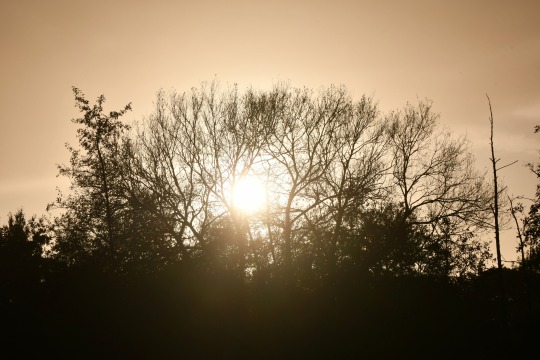



Ten of my favourite photos I took in October 2024 and month summary
The photos are of; fly agaric at Matley Wood in the New Forest, shaggy scalycaps at Lakeside Country Park, Kingfisher at Blashford Lakes, Speckled Wood, Migrant Hawker, Mottled shieldbugs and view at Lakeside, autumn leaves in Winchester and Michaelmas daisies and New Forest Pony at Lymington.
October was a fantastic month of fungi for me. In the peak season I treasured seeing many spectacular, gorgeous and fascinating species including fly agaric, devil's fingers, amethyst deceiver, yellow stagshorn, shaggy scalycap, candlesnuff fungi, bleeding fairy helmet, eyelash fungi, parasol, turkey tail, earthballs, panthercap, false death cap, sulphur tuft and waxcaps. It has also been nice to see slime mould including red raspberry slime mould at a few places and lichen and moss.
I had a brilliant birdwatching month too with some special species seen heading well into autumn. Key species seen were a fair few Kingfishers, Water Rail, Great White Egret, Greenshank, Avocet, Lapwing, Jack Snipe, Sanderling, Common Gull, Pochard, Gadwall, Pintail, Wigeon, Shoveler, Teal, Goosander, Brent Geese, Egyptian Geese, Little Grebe, Marsh Harriers, Siskin, Nuthatch, Great Spotted Woodpecker, Green Woodpecker, lots of Jays seen in their active time of year, notable Ravens at Lakeside and home, Dunnock, Blackcap at Lakeside, Cetti's Warbler, Wren and Long-tailed Tit. Turnstones and Ringed Plover seen well, Tufted Duck, Mute Swan, Moorhen, Coots and Greylag Geese at Lakeside, Jackdaw and Magpie seen a lot, Red Kite in Winchester, Sparrowhawk, Kestrel, Chaffinch, Grey Wagtail seen well and Pied Wagtail were also great to see. Glorious scenes came this month with the return of the Redwings a key bird of the autumn and winter, I was elated to see a Hen Harrier and I was thrilled to see the Winchester Peregrines and Lakeside Great Crested Grebes including their chicks a lot.
There were some nice butterflies to see still with lots of Speckled Woods especially at Lakeside, Red Admiral and Peacock and I was amazed to see a Hummingbird Hawk-moth in Winchester as well as other moths. Dragonflies and damselflies continued to shine this month with so many splendid views of Migrant Hawkers and Southern Hawker and Common Darters too. My first Willow Emerald Damselfly of the year was special to see at Fishlake Meadows. Other insects I enjoyed seeing this month were Mottled shieldbugs and other shieldbugs, wasps and hornets. It was good to see lots of spiders this month too including Long-bodied Cellar spider at home and snails and slugs. In terms of mammals I enjoyed seeing the also active Grey Squirrels a few times, Roe and Fallow Deers and New Forest Ponies.
Key flowers seen this month included Michaelmas daisies, forget-me-not, comfrey, lots of oxtongue, dandelion, tormentil, bell heather, common mallow, white deadnettle, stinging nettle, daisy, water mint, vervain, viper's-bugloss, horseweed, common and ivy-leaved toadflax, hogweed, yarrow, hedge woundwort, ragwort, gorse, dock, herb-Robert and wood avens which brought some wonderful colour as it quietened down for flowers. Wild carrot, teasel, hemp agrimony and spear thistle were among pretty seed heads enjoyed this month with cleavers enjoyed too. There was also a great display of berries this month again with rose hips, hawthorn berries, guelder rose berries, dogwood berries, nightshade berries and snowberries creating vibrant scenes.
And of course this month the splendour of autumn's colour was captivating and wholesome to observe. I also enjoyed taking in many great other vistas this month including coast, reedbed and general wetland, rivers and New Forest heaths and woodland. There were some special sky scenes observed this month too. Have a great November all.
#kingfisher#hen harrier#water rail#autumn#fly agaric#shaggy scalycap#amethyst deceiver#devil's-fingers#speckled wood#migrant hawker#lakeside country park#lymington#splendid#flowers#forget-me-not#hemp agrimony#world#earth#europe#nature#outdoors#england#october#memories#hawthorn#rose hips#marsh harrier#avocet#pintail#pochard
7 notes
·
View notes
Text
Birds of Mithrim and Eithel Sirion
Birds of Dor-lómin
Flora, fauna, geography and environment Masterlist
I’ve finished my series of birds of the Fëanorian realms so I’m doing the Nolofinwëan ones now! As always I include some world building about birds at the end so it’s not just a list of species:)
Hithlum (Sindarin: Mist Shadow) is a land North of greater Beleriand. The Southern and Eastern borders were lined by the Ered Wethrin or Mountains of Shadow which were near impossible to cross and the Northwest border was lined by the Ered Lómin or Echoing Mountains. The fortress of Fingolfin and Fingon after him was located in the Ered Wethrin, at the source of the river Sirion. It was called Barad Eithel
As always please feel free to ask more
Notes: these are species rather than genuses or more general categories however within these species there are likely subspecies not listed as well as specimens not identified in the real world
Lake Mithrim and the connected rivers: grey herons, tufted duck, steller’s eider, goldeneye, bimaculate duck, garganey, snow crane, greylag goose, mute swan, common pochard, common white eye, common teal, northern pintail
Eithel Sirion and the mountains: booted eagle, alpine swift, alpine chough, bearded vulture, golden eagle (rare), alpine accenter, rock ptarmigan, common wallcreeper, red billed chough, water pipit, common redstart, crestless hawk eagle
Greater Hithlum hills and forests : golden plover, black stork, corn bunting, common siskin, white stork, marsh harrier, hen harrier, pallid harrier, saker falcon, greater painted snipe, great bittern, white backed woodpecker, thrushes, marsh wren, river warbler, snowy owls, common raven, black grouse, eagle owl, lesser spotted eagle
World building notes:
Within Barad Eithel, there is a mural of the Crissaegrim where rests the roosts of Thorondor and his kin. The mural was done in tribute to the Eagle king and neither the painters nor Fingolfin knew that the mountain eyries depicted looked over the hidden city of Turgon
The Noldor and Northern Sindar of Mithrim both eat meat though the Noldor more commonly. Water birds from Lake Mithrim are caught and eaten on feasts and celebratory occasions only.
Harriers and saker falcons are held by some of Barad Eithel’s nobles as companions, messengers and hunters. Pallid harriers appear on the crest of the house of one of Fingolfin’s advisers.
Wallcreepers, which live throughout the Ered Wethrin and connected mountain ranges, such as the Ered Lómin and the mountains of Mithrim. They’re an uncommonly docile species for songbirds and are sometimes befriended by members of the Northern Sindar. They’re sometimes depicted to represent mountain life more generally in the art and poetry of the Sindar of Mithrim.
15 notes
·
View notes
Photo







A Downer Woods Feathursday
At the northern-most end of our campus is a parcel of undeveloped land called Downer Woods (named after Downer College, one of our predecessor institutions which originally owned the property). By legal contract the woods may never be developed (thank goodness!!). Today most of the land serves as one of UW-Milwaukee’s field stations, but it is also public land that the entire community may enjoy.
I walk through Downer Woods every day to and from work (always a highlight of the day), and I have come to know its many denizens, especially its birds. Today we highlight some of the birds that can be seen on almost any day in these woods. From top to bottom: American Redstart (Setophaga ruticilla); American Kestrel (Falco sparverius); Downy Woodpecker (Dryobates pubescens); White-breasted Nuthatch (Sitta carolinensis), shown here with a Red-breasted Nuthatch (Sitta canadensis), which I have yet to see in Downer Woods; Mourning Dove (Zenaida macroura); Black-capped Chickadee (Poecile atricapillus); Brown Creeper (Certhia americana). The Belted Kingfisher (Megaceryle alcyon) shown here is not found in Downer Woods, but is a common feature of the Milwaukee River less than half a mile to the west. It’s such a handsome bird to watch, I had to include it here.
Other birds I have seen in these woods include the Crow, Robin, Cardinal, Dark-eyed Junco, Wood Thrush, White-crowned Sparrow, Chipping Sparrow, Song Sparrow, Pine Siskin, Cedar Waxwing, Goldfinch, House Finch, Rose-breasted Grosbeak, Common Grackle, Wild Turkey, and Red-tailed Hawk.
These chromolithographs are from the 1907 edition of Bird-Life, A Guide to the Study of our Common Birds by Frank M. Chapman, with illustrations by Ernest Thompson Seton, published in New York by D. Appleton and Company. We featured a Barred Owl from this publication last Monday.
View more Feathursday posts.
-- MAX
#Feathursday#Frank M. Chapman#Ernest Thompson Seton#Bird Life#American Redstart#American Kestrel#downy woodpecker#White-breasted Nuthatch#Red-breasted Nuthatch#mourning dove#black-capped chickadee#Brown Creeper#belted kingfisher#chromolithographs#Yay chromoliths!#birds#birbs!#kingfishers
134 notes
·
View notes
Video
Robin on the East Lake Kent Reserve.. by Adam Swaine Via Flickr: Sevenoaks Gravel Pits is a 73.7-hectare (182-acre) biological Site of Special Scientific Interest on the northern outskirts of Sevenoaks in Kent.[1][2] It is managed by Kent Wildlife Trust as the Sevenoaks Wildlife Reserve..The site was converted from gravel-pit to nature reserve by the Harrison family - particularly Jeffery Harrison, after whom the visitor centre is named. As such, the site is almost totally man-made - nearly all trees on the site were manually planted,[4] and the lakes and ponds were created by excavating and flooding former gravel workings with water from the River Darent.[5] As such, the site represented the first such conversion of a gravel-pit anywhere in the United Kingdom.[4] Large areas of gravel and sand were replaced with woodland, supporting birds such as woodpeckers, warblers and tits, as well as other migratory birds. These include siskins - a bird that comes in the winter months to feed on alder seeds.[4] Areas of the reserve have been left to mature and reach old age, with plenty of dead wood habitat for fungi and insects. In contrast, other sections see the trees are coppiced to create open areas and denser woodland with its own community of plants and animals. The reserve further includes five lakes and a mixed habitat of ponds, seasonally flooded pools,
#walks#waterside#water#lakes#robin#robin red breast#Robin (Erithacus rubecula)#adult robin (Erithacus rubecula)#(Old World flycatchers)#passerine bird#passerines#perching#england#english#english birds#british birds#british#britain#nature lovers#nature#natures finest#nature watcher#nature reserve#RSPB#wildlife#wild#scenic#Birds#Kent#South East
1 note
·
View note
Photo

Download Suzanne Chesterton - Voyager Radio 139 for free now!
Artist: Suzanne Chesterton Show: Suzanne Chesterton – Voyager Radio 139 Quality: 320 Kbps 48000 Khz Genre: Trance Source: RSS
Discover more Suzanne Chesterton live sets & radioshows HERE | Listen or download more Voyager Radio episodes HERE
Suzanne Chesterton – Voyager Radio 139 Tracklist
It’s a Siskin special this week, which means only one thing… Legendary singer and songwriter, Sue McLaren, joins Suzanne on the Voyager spaceship this week. Together they co-host the show (if they can get their words out!), playing music from Pretty Pink, ilan Bluestone, Three ‘N One, Hrrtz & Shells and loads more!
Franky Wah ft. AETHO – Should Have Seen It Coming [Anjunadeep] ANUQRAM – Sun Town [Zero Three] ASCO & Nicola Fasano – You’re Not Alone [Hexagon] Hrrtz & Shells – Keep Going [Anjunabeats] Pretty Pink ft. Emina Sonnad – Let You Go [Anjunabeats] Adam Griffin & Ando Loki – Free My Mind [Perfect Havoc] Tom Staar x Jem Cooke x AVIRA – Gravity [Armada Music] Three ‘N One presents Johnny Shaker – Pearl River (Icarus Extended Remix) [Armada Music] Tim van Werd – Who You Are [Protocol Recordings] ilan Bluestone – Taking You There [Anjunabeats] Xpectra – Walk On Water [2Rock] Andrew Robbixen – Lost In Paradise [Interplay Global] Amy Wiles – Biding Time [Anjunabeats] ilan Bluestone ft. Gid Sedgwick – Paid For Love [Anunabeats]
Final Approach Anderson Rocio – Angel [Darkerside Album]
The podcast Suzanne Chesterton – Voyager Radio is embedded on this page from an open RSS feed. All files, descriptions, artwork and other metadata from the RSS-feed is the property of the podcast owner and not affiliated with or endorsed by EDMliveset.com.
Follow us on: Facebook, Twitter, Instagram, Reddit & VK
0 notes
